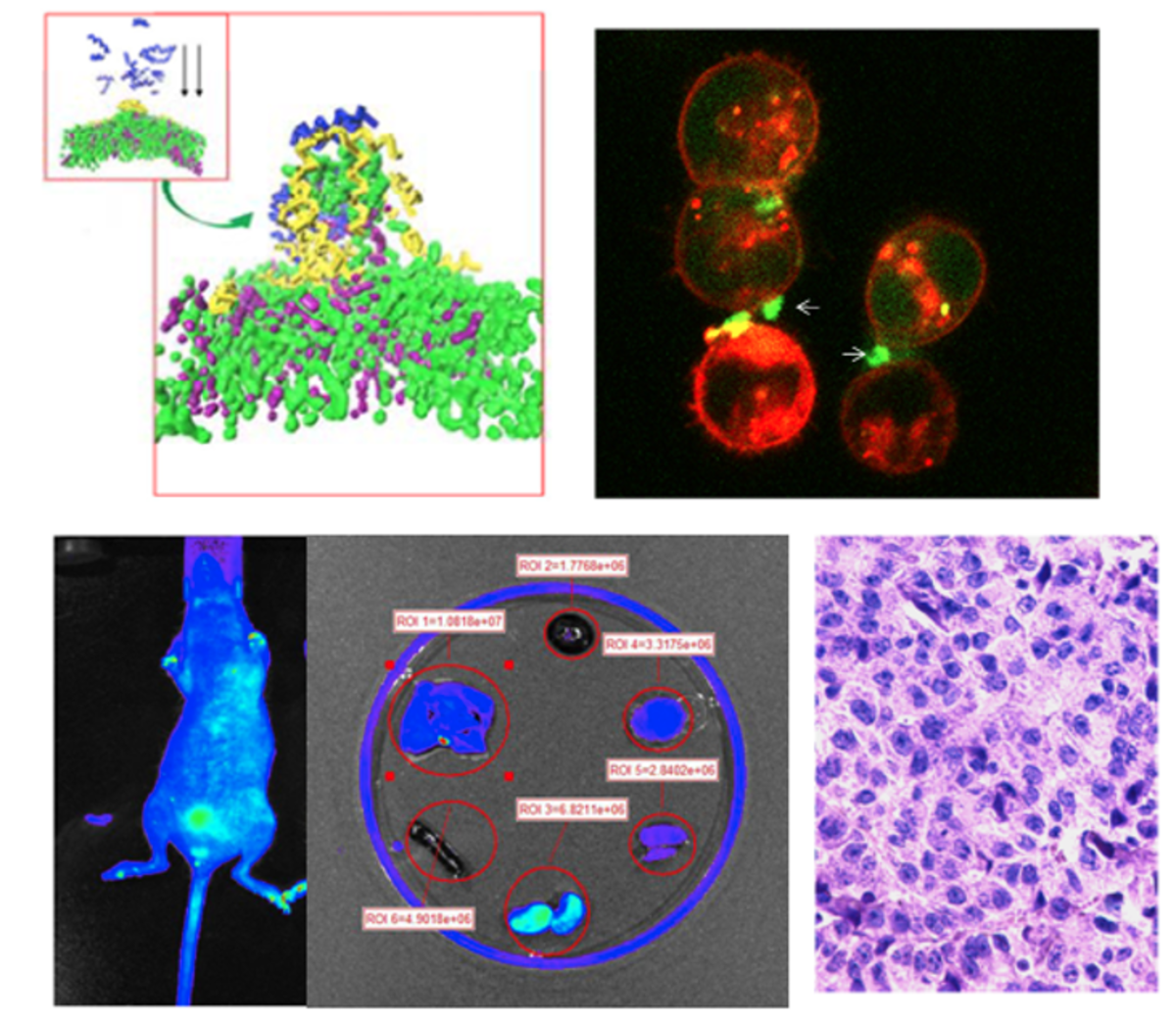Laboratory of Pharmaceutical Chemistry and Engineering
About
The Laboratory of Pharmaceutical Chemistry and Engineering focuses on Pharmaceutical Chemistry and engineering through the use of various nanomaterials especially polymers. These nanomaterials can be used for a wide variety of applications from antibacterial coatings to drug delivery.
Research Areas
A. Therapeutic Peptides.
As biologically active molecules and therapeutics, peptides have many unique and unbeatable features in comparison with proteins. Bioactive peptides regulate many physiological processes, acting at some sites as endocrine or paracrine signals and at others as neurotransmitters or growth factors. These peptides have many positive impacts on human health, including antimicrobial, antifungal, antiviral, and antitumor activities. Over the last decade, there has been a rapid expansion in the study on peptides, and this is likely to continue. We are interested in a new peptide design and delivery technology aimed at developing new therapeutic peptides for a wide array of pharmaceutical applications. The two focuses of our current peptide project are:
Long life-span therapeutic peptides. All therapeutic peptides are sensitive to proteases and thus have very short life-span in the circulation which is usually insufficient for peptides to be fully exposed to the target tissue. Some approaches which have been attempted in the past are amino acid replacement, polymer conjugation, and microparticulate encapsulation. Unfortunately, D-amino acid replacement and polymer conjugation may be associated with dramatic peptide activity drop. Similarly, microparticulate encapsulations are accompanied by increased peptide retention in reticuloendothelial system (RES) which yields undesired toxicity to specific tissues and organs such as spleens and livers. We pioneered the utilization self-assembly in peptide design and have successfully developed therapeutic peptides with greatly improved life-spans;
Cell specific and permeable peptides. Due to the hydrophilic nature and lack of defined structures, short peptides have extremely little to no targeting ability and cell permeability. Current conjugation approaches aim at the poor cell selectivity and permeability have dramatic and unavoidable effects on the biological activity of the peptides. We have developed a single amino acid modification/mutation approach which can improve for selectivity or permeability of short therapeutic peptides without affecting their biological activities.
B) Bacteria Responsive Materials for Medical Device Infections and Bio-Fouling
Any solid-liquid interface provides an environment for microorganism attachment and growth to cause biofouling. Biofouling is a growing global problem, occurring on a wide variety of surfaces, including industrial or potable water system piping, natural moist surfaces (bottom of boats and docks), living tissue (oral cavity), and biomedical devices. Biofouling in industrial water-based process accounts for billions of dollars lost each year. In addition, as the use of biomedical devices and implants increases, indwelling device infections represent life-threatening circumstances and account for the majority (> 80%) of hospital acquired infections. Because of the risk of resistant mutants and biofilms, classical antibiotics are not effective. Current antibiotic impregnation is not an ideal approach due to its many unsolved problems including a short life-span, narrowed antibacterial spectrum, ineffectiveness towards resistant mutants, and the potential to hasten the antibiotic resistance process. We are working on polymeric antibacterial surfaces designed specifically for implants associated infections. Surfaces constructed from polymeric antibacterial can sense bacteria attachment and kill bacteria by inducing autolysis. Biomedical (catheters, stents, orthopedic and dental implants, wound dressing, and antibacterial textiles) and wide industrial applications of new antibacterial materials (metals and various polymers) are being explored.
C) Nano-Technology Enabled Drug Delivery and Cell Sensing
Melanin is a highly adhesive naturally occurring pigment which has been studied for decades. A variety of melanin like polymers have been used for a wide variety of applications including: biosensing, antibacterial coatings, and drug delivery. The properties of these polymer coatings including the hydrophobicity and surface potential are key determining factors of the effectiveness of the applications. Through the introduction of copolymers and the tuning of the reaction conditions, the utility of the polymers can be enhanced.
Faculty
Jun Feng "James" Liang
Labs: 421 and B09

